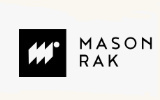(blank)
15-Feb-18
Blockchain and Transfer Pricing
Printed below is an article that first appeared on the Tytho website. Many thanks to
Monica Erasmus-Koen for giving etaxjobs permission to use it.
By allowing digital information to be distributed but not copied, blockchain technology created the backbone of a new type of internet. It was originally devised for digital currency, like Bitcoin, but the tech community is now finding other potential uses for the technology.
First of all, how can blockchain be relevant for taxation?
Blockchain will significantly affect transactions. The technology will provide long - term solutions reducing the administrative burden on tax systems. In general, the technology does the following as well:
• Simplify processes
• Decrease administration and external costs
• More speed • Improves security
• Untampered audit trail
• Data quality
• Transparency / more trust
Okay. So what is it, and how does it work?
Blockchain is a distributed database (a shared ledger) that records and validates all transactions chronologically. A computer or server, connected to the blockchain network, becomes a participant that performs the task – of validating and relaying transactions – by getting a copy of the blockchain protocol, which is downloaded automatically upon joining the blockchain network.
A "block" can be called a "line item" in the shared record book. It can be illustrated as follows:
A blockchain is made up of a set of data blocks, each of them containing a set of transactions. These blocks are electronically chained together, locked with crypto graphy, and a record of each transaction is established. A blockchain can be public of private. A private blockchain or, a so-called, permission-based blockchain, requires a digital invitation to join a pre-defined network.
Secondly, data on the blockchain is “hashed”. In simple words, a hash is a very short code of random letters and numbers “a0680c04c4eb53884be77b4e10677f2b”, represents the digital figure print of the relevant transaction. The hash becomes electronically inseparable from the relevant transaction. If the block is changed, for example, if someone tried to change any data in the “block”, the hashed value would be different and everyone would be able to detect that something had changed.
Today’s internet has security problems that are familiar to us all, as we all rely on the username/password system to protect our identity and assets online. Blockchain security methods use encryption technology that apply hashes as digital fingerprints for each transaction written in the blockchain.
A simple example of how the blockchain will decrease administrative costs and prevent security (hacking) risk for Transfer Pricing documentation: the future of file storage. Rather than storing your files on Dropbox or OneDrive cloud servers, what if your files could be split up into tiny chunks and stored on thousands or even millions of people's computers around the world? The record (of which files you own and where) cannot be changed, but only you have the key to view the pieces as a whole – no organization owns your data. This would mean, from a security perspective, that there is no “single server” that a hacker could access to read your confidential Transfer Pricing documentation or legal agreements.
The blockchain network lives in a state of consensus, one that automatically checks in with itself every ten minutes. Like a self-auditing ecosystem of a digital value, the network reconciles every transaction in ten-minute intervals.
Blockchain implications on Transfer Pricing
You do not need to understand how blockchain works to use it, but blockchain will have huge implications on how Transfer Pricing is recorded – helping to fight Transfer Pricing fraud. Some of the possibilities for Transfer Pricing reporting are as follows:
• Real-time registration of intercompany transactions for both parties – both buyer and seller have a copy of the price-related data leaving no space for differences.
• No duplication of entries – since the registration of a purchase of Item A for 10 Euro is processed in real-time for both buyer and seller, there is no possibility for duplication of entries.
• Single use – when the system records the purchase of one unit of Item A by 100 Euro and the company wants to sell it, the blockchain ensures that the exact ownership of item A is transferred.
• Digital signature – all transactions have to be digitally signed or approved, meaning that it is possible to prove that a product has been sold, as someone from Company A has approved the transaction and utilized their credentials. Digital credentials are much safer than a paper signature on even email approvals.
• Real-time – blockchain transactions can be confirmed in real-time, making the actual transaction much quicker in comparison to today’s processes concerning stocks, property, assets, etc.

 As an employer, talent is undeniably one of our greatest assets and if nurtured in the right way, can make contributions to the firm’s ongoing success which far exceed our expectations.So how can we tailor our performance review process to ensure we are identifying and recognising our ...
As an employer, talent is undeniably one of our greatest assets and if nurtured in the right way, can make contributions to the firm’s ongoing success which far exceed our expectations.So how can we tailor our performance review process to ensure we are identifying and recognising our ...













